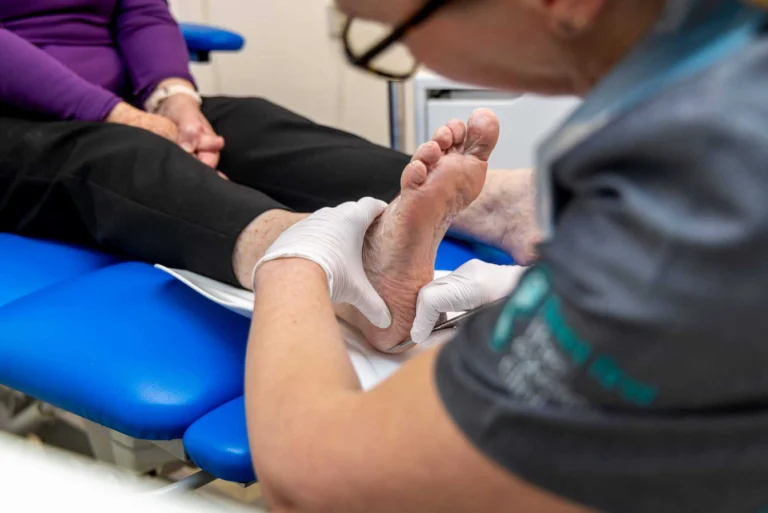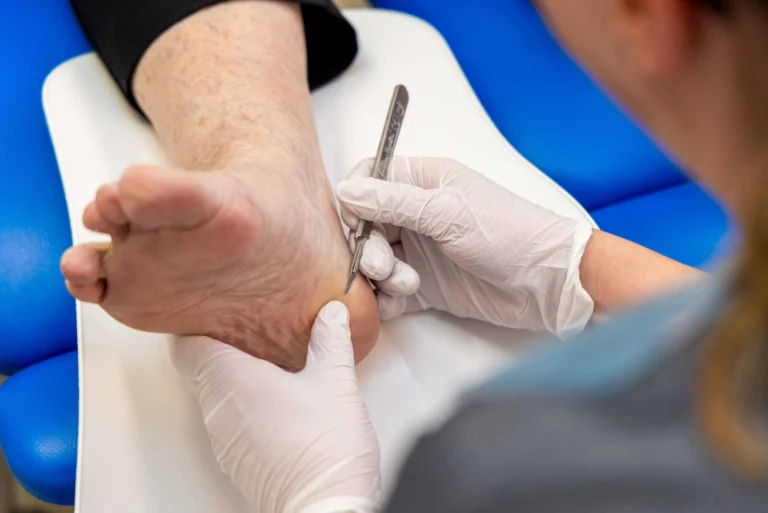
Corns and calluses are thickened, hard areas of skin that typically develop on the feet, due to repeated pressure or friction. Although corns and calluses can be a problem in themselves (on account of the pain, appearance, difficulty with footwear and cracking) they are also symptomatic of deeper seated issues with the foot structure and function. They serve as a useful indicator that a visit to a Podiatrist is likely to be helpful, not only to treat the immediate symptoms but also regarding management of the feet to maintain comfort and mobility, reducing the risk of pain and restricting activity in the future.
Corns are areas of tough, hard yellow skin that are small, cone shaped, usually with a raised outer surface, and are often mistaken for verrucae.
Calluses are also areas of tough skin although they are typically larger and broader, relatively flat areas. Both are the body’s natural response to protect the skin from continuous trauma.
An often-cited cause of corns and calluses is ill-fitting shoes, which create pressure points, or repetitive activities that put stress on certain areas of the feet. For example, high heels, tight shoes, or shoes that don’t offer enough support. Whilst footwear can certainly be a contributory factor, it is usually underlined by less obvious but critical and persistent deficits in strength, flexibility, structure and function of the foot.

Treatment for corns and calluses typically involves relieving the pressure and friction that caused them. Over-the-counter treatments like pumice stones, foot scrubs, or pads designed to cushion and protect the area can help reduce discomfort and soften the hardened skin but typically fail to address the cause, seeing the corns and calluses return, sometimes in a matter of days and frequently within a few weeks. Whilst over the counter salicylic acid treatments can help break down the thickened skin these products can prove to be dangerous in certain circumstances and can lead to further damage at an already troubled area. We often see patients where additional time and resources are required to manage this complication in addition to the original problem.
A podiatrist can trim or remove the growths using specialized, sterile tools following years of training to be able to do this safely and effectively. In most cases it is a painless and relatively quick process with immediate relief. The Podiatrist can then advise you on identifying and effectively managing the underlying issues such as the foot structure and function. This may involve orthoses or changing footwear to slow or reduce the risk of further development and damage. At The Exeter Clinic we therefore recommend that corns and calluses should be seen by a podiatrist at the earliest opportunity for an appropriate diagnosis, assessment and treatment, Keeping you comfortable, active and reducing the risk of further problems or complications. Call to arrange a consultation on (01392) 217333 or book online.